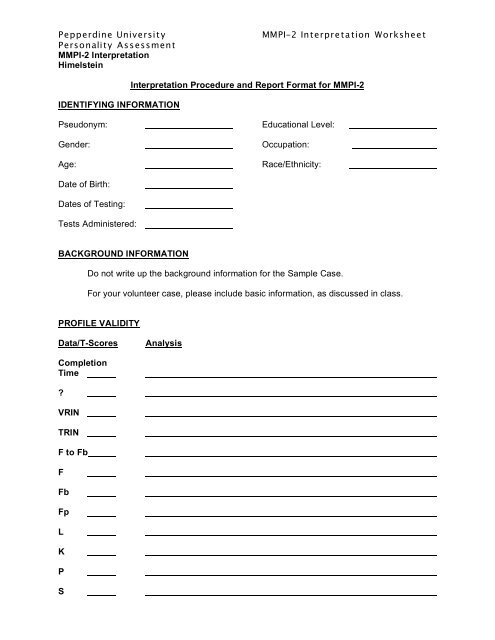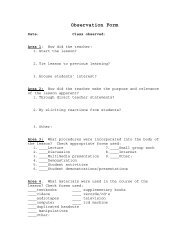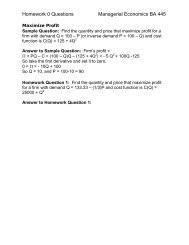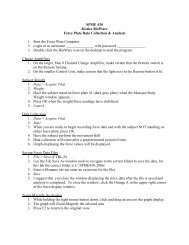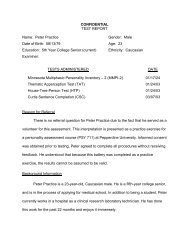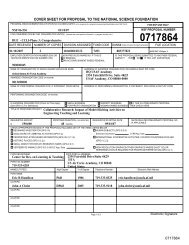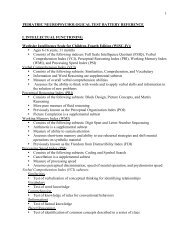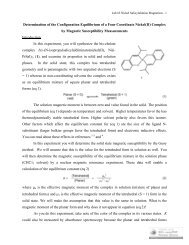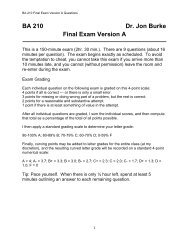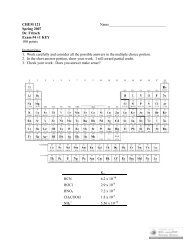Pepperdine University MMPI-2 Interpretation Worksheet Personality ...
Pepperdine University MMPI-2 Interpretation Worksheet Personality ...
Pepperdine University MMPI-2 Interpretation Worksheet Personality ...
- No tags were found...
Create successful ePaper yourself
Turn your PDF publications into a flip-book with our unique Google optimized e-Paper software.
<strong>Pepperdine</strong> Universit y<strong>Personality</strong> Assessment<strong>MMPI</strong>-2 <strong>Interpretation</strong>Himelstein<strong>MMPI</strong>-2 Interpre ta tion Workshee tIDENTIFYING INFORMATION<strong>Interpretation</strong> Procedure and Report Format for <strong>MMPI</strong>-2Pseudonym:Gender:Age:Educational Level:Occupation:Race/Ethnicity:Date of Birth:Dates of Testing:Tests Administered:BACKGROUND INFORMATIONDo not write up the background information for the Sample Case.For your volunteer case, please include basic information, as discussed in class.PROFILE VALIDITYData/T-ScoresAnalysisCompletionTime?VRINTRINF to FbFFbFpLKPS
<strong>MMPI</strong>-2 <strong>Interpretation</strong>HimelsteinPage 2ADJUSTMENT LEVELQuestions to consider: What is the emotional comfort level of examinee? What is his/her abilityto carry out responsibilities of life? What is the level of daily functioning?Analyze this data to answer these questions, but incorporate other relevant data, also.FBasic Scales:Slope of Clinical Scales: Look at visual profilePositive slope: left side low, right side high: Severe psychopathologyNegative slope: left side high, right side low: Neurotic individualSupplementary ScalesAEsReContentScales T-ScoresAnalysisWRKLSEANXOBSDEP
Adjustment Level – Continued<strong>MMPI</strong>-2 <strong>Interpretation</strong>HimelsteinPage 3Critical ItemsCategoryItemCHARACTERISTIC TRAITS AND BEHAVIORThis is the core process of interpretation and will be determined by each examinee’s individualtest results. Always interpret in the context of the examinee’s background information.Elevation T-Scores AnalysisMild T=60-65 Tendencies in personality/functioningModerate T>65 Core features in personality/functioningHigh T.70 Psychopathology in personality/functioningFirst, record all scale elevations below and refer back to this list as you organize data into thesubheadings. Under each subheading, specific scales are provided as guidelines, butadditional analysis may be warranted, based upon the examinee’s test scores.Basic Scales, from highest to lowest T-scores: (i.e., 2748906135)2-point codetype:3-point codetype:Harris-Lingoes:Supplementary:Content:Content Component:Relevant Low Scale Scores:Critical Items:
SYMPTOMS Analyze all elevated scales, beginning with Basic Scales Profile.Scale T-Score Analysis<strong>MMPI</strong>-2 <strong>Interpretation</strong>HimelsteinPage 4MAJOR NEEDS Assess intrapsychic needs for affection, recognition, achievement,dependency needs, as well as environmental needs.
<strong>MMPI</strong>-2 <strong>Interpretation</strong>HimelsteinPage 5PERCEPTIONS OF THE ENVIRONMENTPd4Sc1REACTIONS TO STRESSEsMa3SELF-CONCEPTLSEMa4
<strong>MMPI</strong>-2 <strong>Interpretation</strong>HimelsteinPage 6GENDER IDENTIFICATION5GMGFSUBSTANCE USEMacRAASAPSEMOTIONAL CONTROLAGGRDISCANGHy5Ma2HoO-H
INTERPERSONAL RELATIONSHIPS<strong>MMPI</strong>-2 <strong>Interpretation</strong>HimelsteinPage 7SODMDSScale 0Pd4PSYCHOLOGICAL RESOURCESInclude Es and discuss strengths of examinee.DYNAMICS AND ETIOLOGYGo beyond scores to develop hypotheses, incorporating relevant background information.DIAGNOSTIC IMPRESSIONSIt is not possible to assign psychiatric diagnoses solely on the basis of psychological test data.The criteria for most diagnoses include information that cannot be obtained from psychologicaltest data. However, statements can be made concerning the diagnoses that are mostconsistent with _________’s <strong>MMPI</strong>-2 results. (Graham, 2000, <strong>MMPI</strong>-2, 3 rd edition).Include discussion and DSM-IV-TR Multiaxial diagnosis.
<strong>MMPI</strong>-2 <strong>Interpretation</strong>HimelsteinPage 8TREATMENT IMPLICATIONS AND RECOMMENDATIONSDetermine how much the examinee needs treatment and anticipate the likelihood of favorableresponse.Discuss which procedures and interventions are most appropriate.Provide information about problem areas to be considered in treatment; alert therapist to assetsand liabilities that could facilitate or hinder progress in therapy.Analyze defensive validity scale patterns: L and K scales considerably higher than F scale; Cryfor help validity scale pattern: F scale considerably higher than L and KContent Scale: Consider T>65 scores as direct communication from examinee to examiner.TRTSupplementary Scale: High Ego Strength (Es) shows psychological resources that can bebeneficial in treatment. However, defensive profile can produce high Es that might not be apositive treatment indicator. And, people who exaggerate symptoms might have low Es thatmight not be a negative treatment indicator.


